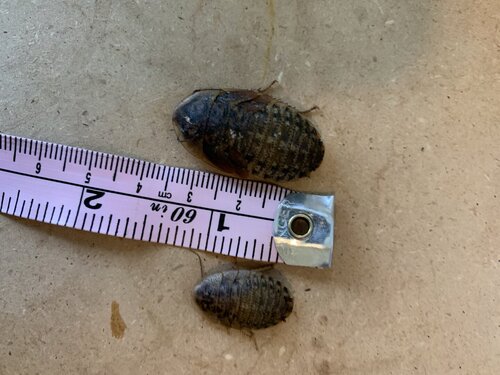CasqueAbove
Chameleon Enthusiast
Yes I do know they grow, I should have mentioned that for others. They are still way smaller. So I did end up keeping 5, one dented already. However I did not plan on keeping so I was not careful at all.
I am still curious of it. Nobody seems to have seen it. Which makes me think the cutback in food had something to do with it. We shall see what comes of it.
I am still curious of it. Nobody seems to have seen it. Which makes me think the cutback in food had something to do with it. We shall see what comes of it.



